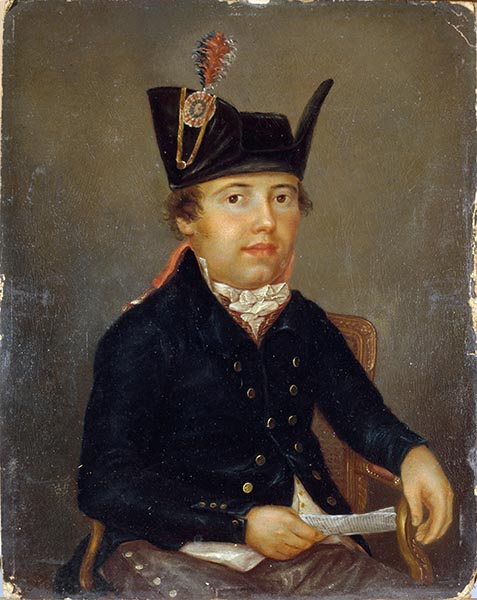Pierre-François Palloy (January 22, 1755 - January 18, 1835) was a French master mason and public works contractor. Born in Paris, Palloy was raised by his grandfather and attended school in Paris before enlisting in the infantry. After 6.5 years in the infantry, he entered the civilian world in 1775 and began working for an architect-contractor named François Nobillot. He married the architect's daughter in 1776 and secured himself as the architect's successor. By his own account, Palloy owned numerous houses and other buildings around pre-Revolutionary Paris and had a personal fortune he valued at 500,000 livres. After the storming of the Bastille on July 14, 1789, there was considerable debate about what should happen to the building. Palloy knew that he wanted it demolished and began working on it that night under his own initiative. He secured the contract to demolish the prison two days later from the National Constituent Assembly. At one point he had 400 permanent workers on the site and as many as 800 part time workers. Most of the work was done by November and it was completed by July 1790. During and soon after the demolition, Palloy had a series of scale models of the Bastille created using stones from the demolition. These models were delivered to Departmental governments throughout France and numerous other governmental entities, including the city of Paris. George Washington also received a model. Palloy marketed these models under the name 'Palloy Patriote' (Palloy Patriot) and also made medals from the chains used in the drawbridge and to bind prisoners, plans of the Bastille, and other souvenirs. He also used stones from the Bastille to build himself a house in Paris and one in Sceaux. In 1791 he was named a 'Hero of the Revolution.' In 1793 Palloy was accused of embezzling funds from the demolition and was held in prison from December 28, 1793 until March 17, 1794. After being released from prison, Palloy moved to Sceaux where he spent the rest of his life. While living in Sceaux he hosted lavish parties and recounted his stories of the Revolution. Somehow me managed to convince all the succeeding French regimes (the Revolution, Napoleon, the Restoration, and then July Monarchy) that he remained a true patriot. He was awarded the Ordre du Lys in 1814.


